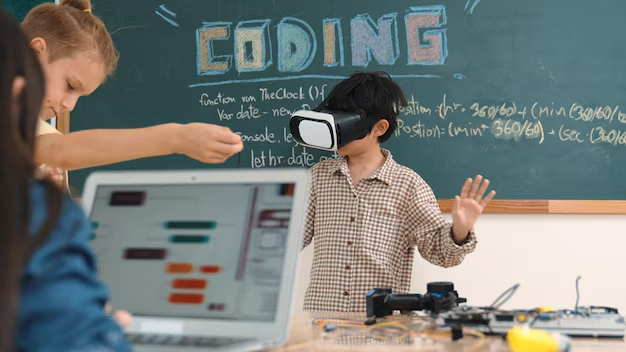
In recent years, inclusive education has gained significant attention, not just as a progressive educational model but as a movement that is fundamentally reshaping societies. At its core, inclusive education promotes the idea that every student, regardless of ability, background, or disability, has the right to learn together in a supportive and accessible environment. The impact of this approach is far-reaching, not just for the students who benefit directly, but for society as a whole. This article delves into how inclusive education is breaking barriers, fostering empathy, and shaping a more equitable world.
1. Redefining Educational Norms
Inclusive education challenges traditional educational structures that often segregate students based on perceived differences in ability. Historically, children with disabilities or those from marginalized communities were educated separately, often in environments that were ill-equipped to meet their needs. Inclusive education, however, works to integrate students of all abilities into general education classrooms, with the necessary supports and accommodations provided to ensure they can thrive. This approach fosters a more holistic understanding of learning, where diversity is viewed as an asset, not a challenge.
2. Breaking Down Stigma
One of the most significant benefits of inclusive education is its role in reducing stigma. When students with disabilities or from different backgrounds are included in regular classrooms, they are seen as part of the collective student body. This interaction allows for the breaking down of stereotypes and prejudices. Students who might have previously been isolated are now seen as individuals with unique strengths, contributing to a sense of shared humanity. As a result, inclusive education promotes empathy, understanding, and respect, which are values that students carry with them beyond the classroom.
3. Promoting Social Skills and Emotional Intelligence
In inclusive classrooms, students learn not only academic content but also valuable social and emotional skills. By interacting with peers who have different learning needs, children develop greater empathy, communication skills, and problem-solving abilities. These skills are essential for functioning in a diverse society and are often overlooked in traditional, segregated educational settings. In an inclusive environment, students learn to work together, support one another, and appreciate differences, laying the foundation for a more harmonious society.
4. Encouraging Collaboration and Innovation
Inclusive education also encourages collaboration among educators, families, and communities. Teachers in inclusive classrooms must be creative, flexible, and resourceful in finding ways to support all students. This often leads to the development of innovative teaching methods and strategies that can benefit all learners, not just those with specific needs. For instance, differentiated instruction, the use of technology, and project-based learning are strategies that can be employed to meet the diverse needs of students. When these methods are embraced in inclusive classrooms, they create a dynamic learning environment where all students are encouraged to reach their full potential.
5. Fostering Long-Term Societal Benefits
The benefits of inclusive education extend far beyond the classroom. Students who experience inclusive education are more likely to carry the values of diversity, equity, and inclusion into adulthood. These individuals are better equipped to participate in and contribute to a diverse workforce and society. The experience of learning in an inclusive setting can help break down barriers in the workplace, where people from different backgrounds, abilities, and experiences collaborate to innovate and solve problems. Inclusive education, therefore, not only impacts the individuals involved but also the future of society as a whole.
6. The Role of Policy and Advocacy
For inclusive education to truly thrive, it is essential that governments, policymakers, and advocacy groups continue to push for systemic changes. Laws such as the Americans with Disabilities Act (ADA) and the Individuals with Disabilities Education Act (IDEA) in the United States have laid the groundwork for inclusive education, but there is still much work to be done to ensure equity in education for all. Policy must continue to advocate for funding, teacher training, accessible infrastructure, and inclusive curricula to support this transformative approach to education.
7. Challenges to Overcome
Despite its many advantages, the implementation of inclusive education faces challenges. These include a lack of resources, inadequate teacher training, and resistance to change. Some teachers may feel ill-prepared to meet the needs of students with disabilities or other learning differences, leading to frustration or burnout. Furthermore, educational systems that are still entrenched in traditional methods may resist the integration of inclusive practices. However, these challenges can be overcome with the right investments in training, resources, and systemic support. The benefits of inclusive education far outweigh these hurdles, and with the continued advocacy and commitment of educators, parents, and policymakers, inclusive education can become a standard for all.
8. The Future of Inclusive Education
Looking ahead, the future of inclusive education appears promising. With advancements in technology, personalized learning, and growing awareness of the importance of diversity in education, there are more tools and strategies than ever before to support inclusive practices. Virtual classrooms, assistive technologies, and flexible learning environments can provide students with the resources they need to succeed. As society continues to evolve, so too will our understanding of what inclusive education can and should look like.
Conclusion
Inclusive education is more than just an educational philosophy—it is a powerful catalyst for social change. By breaking down barriers, fostering empathy, and creating a more equitable environment for all students, inclusive education is shaping the future of society. It is an investment in a world where diversity is celebrated, and everyone, regardless of ability, has the opportunity to learn, grow, and contribute. As we continue to embrace and expand inclusive education, we are not just building better schools; we are building a better, more inclusive world.
